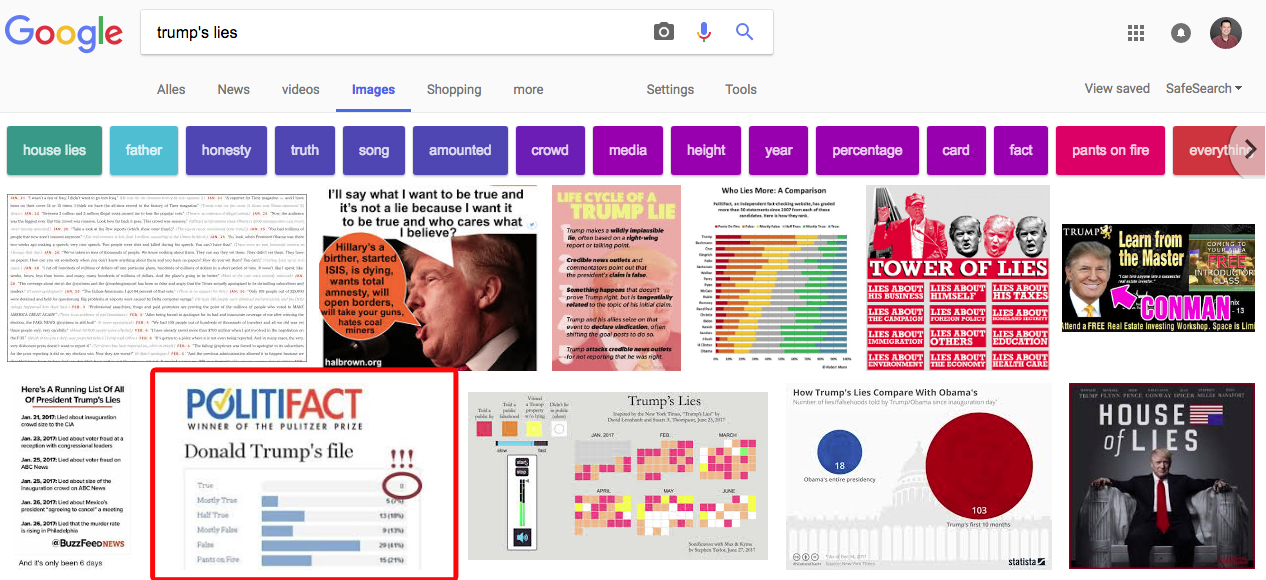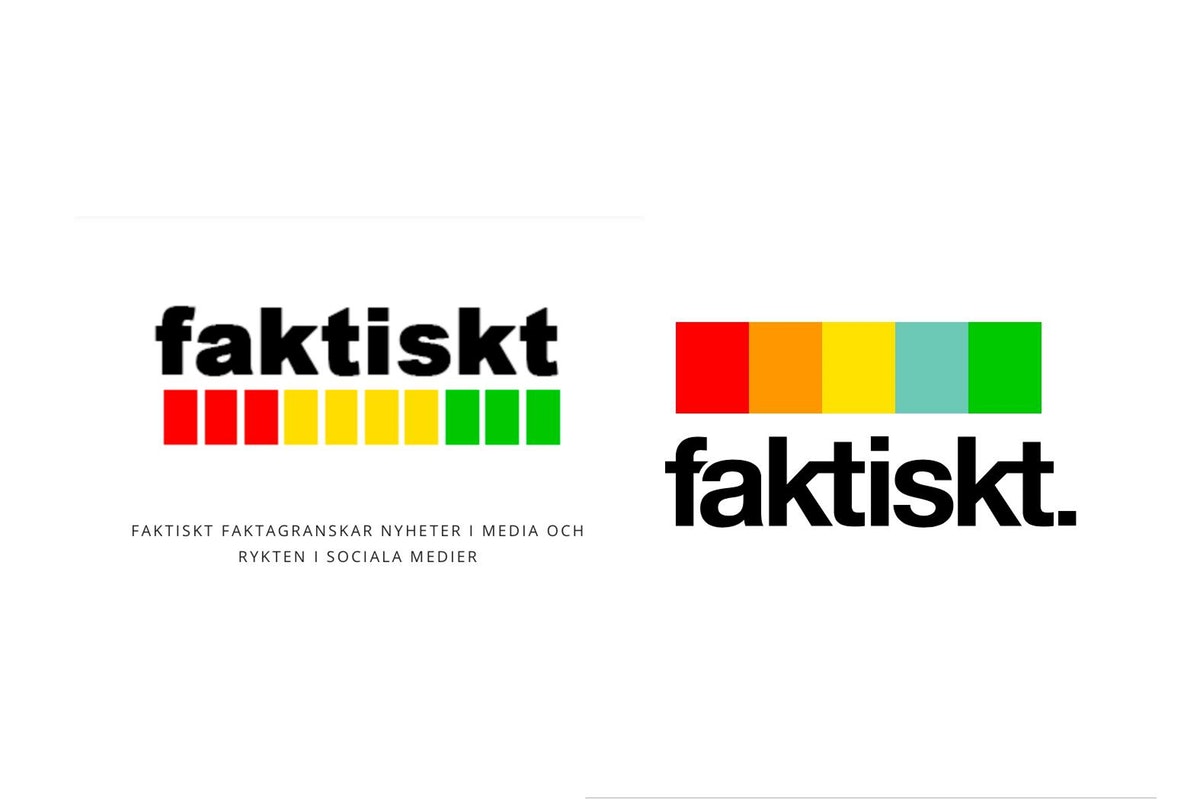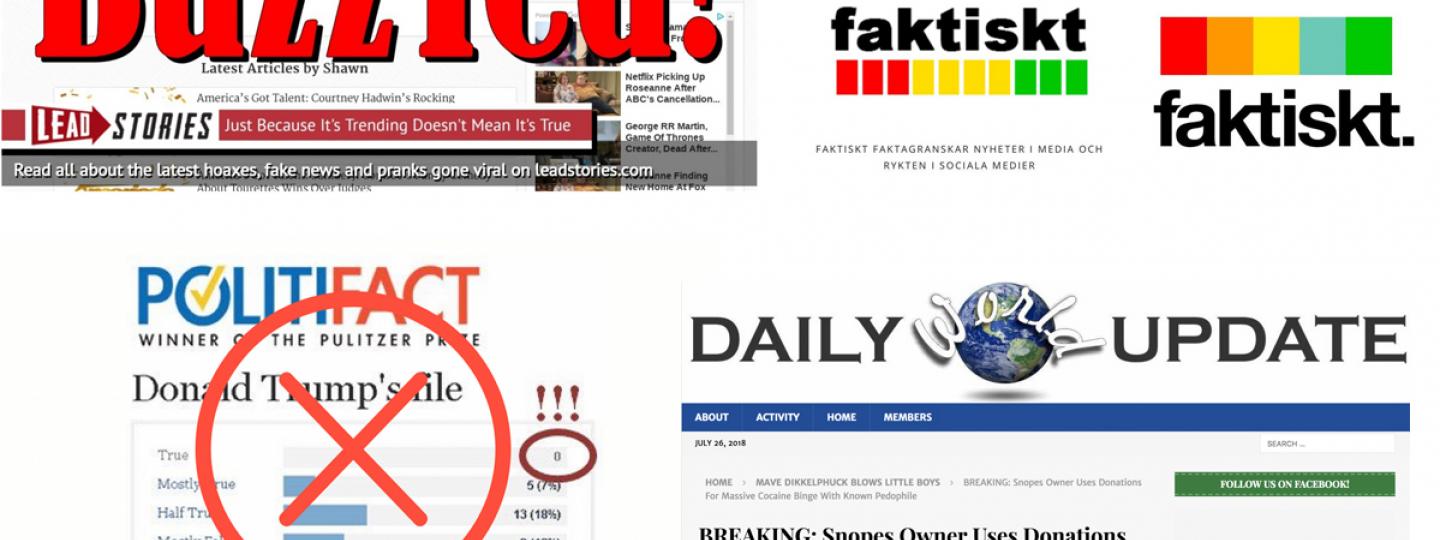On Tuesday afternoon, PolitiFact found a surprise in its mentions.
Josie Hollingsworth, an audience engagement fellow at the (Poynter-owned) fact-checking project, noticed that someone had tweeted a screenshot of PolitiFact’s file for President Donald Trump. That usually wouldn’t be a problem, but this one was fake.
Whoa. An image of PolitiFact’s scorecard for Donald Trump has been doctored, reflecting “0” True ratings. This is wrong, we have rated 27 of his claims True: https://t.co/rXdKWPjP1Z
This proves that ANYONE can be a target for misinformation, even fact-checkers themselves. ? pic.twitter.com/9KSWulCtkG
— PolitiFact (@PolitiFact) July 24, 2018
The tweet was from Rebecca Bingham, a travel journalist. She posted the screenshot in response to a Trump tweet about the potential for Russian meddling in the next presidential election, then deleted it after Poynter sent PolitiFact’s correction to her. She said she found the photo through a Google image search for the phrase “Trump’s lies.” (Poynter was able to replicate the search.)

The photo is a real screenshot from 2015, but since it didn’t have any timestamps on it, Bingham assumed it was Trump’s most recent file.
“That’s a problem with screengrabs, and why proper Internet sleuths should always track their material back to its source,” PolitiFact Executive Director Aaron Sharockman wrote for Poynter. “In this case, if you did, you’d end up here, where you’d see Trump’s PolitiFact record at this very instant.”
It wasn’t the first time a fact-checking organization had been targeted by an out-of-context screenshot, copycat website or fabricated tweet. While PolitiFact’s recent incident was more a case of Google surfacing out-of-date screenshots — making it easier for people to weaponize them — hoaxers regularly go after fact-checkers to delegitimize their work and reinforce their own ideology.
In April, a copycat version of Swedish fact-checking project Faktiskt launched two weeks before the real one did. The site, Faktiskt.eu, had the same name and visual presentation as the original project, which is a collaboration of several different media organizations to debunk misinformation. The copycat’s press release even claims it follows the International Fact-Checking Network’s code of principles and cites an article from the daily newspaper Dagens Nyheter (DN).
But Faktiskt.eu later called the real project a “Ministry of Truth” — a common pejorative for fact-checkers.

“We quickly discovered that the man behind it was a well-known conspiracy theorist and fake news activist,” DN editorial development manager Martin Jönsson told Poynter in an email. “The website used a logo very similar to ours and the press release copied a lot of words from our release.”
The imposter site was a direct attack against Faktiskt. Many of its stories criticize fact checks on the real site, and Jönsson said the man who created it, Torbjörn Sassersson, even offered to sell Faktisk his domain.
Faktiskt declined. And Sassersson’s attempt to discredit Faktiskt didn’t really work, Jönsson said.
“The fake site was so obviously crappy … that few took it seriously,” he said. “No media wrote about it and we decided quickly not to act upon it. We did not comment, did not take any legal action (it would have taken too much time). That was obviously the right tactic: The fake site has not got any attention at all, while we have had more than 2 million page/video views a month the first few months.”
The reasons that people use fact-checkers as a way to distribute misinformation are myriad, but they often boil down to partisanship. In PolitiFact’s case, its outdated work was weaponized as a liberal attack against Trump. The fake Faktiskt site was created to delegitimize fact-checkers debunking Swedish conspiracies, which are often pushed by members of the far-left and far-right.
But sometimes fact-checkers’ work is ripped off simply for the traffic.
Last month, Maarten Schenk, who runs the Lead Stories debunking site in Belgium, busted a marketing site for stealing more than 100 of his articles, as BuzzFeed News first reported. He grew tired of watching Shawn Rice republish work on his site and getting higher Google placement than him.
“I don’t know how they got the idea but Shawn was into producing bulk ‘filler’ content that would work well in search engines,” Schenk told Poynter in a message. “He and Erica Abbott (one of the other authors) would regularly take all videos of performances in shows like ‘America’s Got Talent,’ ‘X-Factor,’ ‘The Voice,’ etc., and write one article per video which would basically consist of an embed and some copy-pasted artist bio and some ‘What did you think?’ filler and a couple of tweets.”
“He basically did the same with fact checks, lifting the basic facts about the hoaxes from real fact checking sites like Snopes, Lead Stories, PolitiFact or Gossip Cop.”
So to catch Rice in the act, Schenk created an alternate homepage that only Rice’s IP address could see. Then, he saw Rice started to republish stories that were on that page. As a final test, Schenk created a blog called The Honey Pot Times and published a George Lucas death hoax, which he then proceeded to debunk on Lead Stories.
Rice took the bait. Schenk had caught him in the act.
“I didn’t expect much to happen when I first started tricking him, thinking that the best-case scenario would involve them getting exposed for hypocrisy by ignoring their own contributor guidelines along with not properly checking their sources,” he said. “But the fact that Craig (Silverman) found out that Shawn’s articles were filled to the brim with plagiarized sections from other sites put the nail in the coffin. If they had stuck to just stealing ideas they might have gotten away with it.”
After BuzzFeed News reached out to Rice, he took down thousands of the articles that he’d allegedly stolen.
In the fact-checking world, imposters aren’t altogether uncommon. In the lead-up to the 2016 U.S. election, infamous hoaxer Paul Horner created a fake URL for Snopes to capitalize on its brand and get clicks on his fake news stories.
But efforts to pose as or delegitimize fact-checkers don’t always manifest themselves in imposter sites or out-of-context screenshots — they also appear in articles.
In May, YourNewsWire, an infamously popular fake news site, published a story claiming that Snopes had been exposed as a “CIA operation” and was dangerous to use. Lead Stories quickly debunked that story — but it still had nearly 80,000 social media engagements as of publication, according to BuzzSumo, an audience metrics tool.
Snopes has become a major target for anti-fact-checking misinformation, attracting headlines like “‘Fact Check’ Site Digitally Alters Obama Portrait… Damage Control in Full Swing” and “Snopes Owner Uses Donations For Massive Cocaine Binge With Known Pedophile” on a semi-regular basis. Poynter reached out to Snopes but had not heard back as of publication.
Along with PolitiFact, Snopes has also been roped into hoaxes about Facebook’s fact-checking project, which allows them to debunk and decrease the reach of fake news on the platform. (Disclosure: Being a signatory of the International Fact-Checking Network’s code of principles is a necessary condition for joining the project.)
To make matters even more meta, a meme using fake photos of Snopes CEO David Mikkelson and investor George Soros once falsely claimed that Factcheck.org — another fact-checking project — exposed Snopes as a “liberal propaganda site.”
In summary: The misinformation was about a fact check published by one fact-checker about another fact-checker.
Corrections: A previous version of this article misspelled Erica Abbott’s name. Additionally, BuzzFeed News reported that Shawn Rice deleted more than 7,000 articles; Poynter mistakenly stated that all of those were Maarten Schenk’s fact checks. In fact, Schenk said Rice plagiarized more than 100 of his articles.







